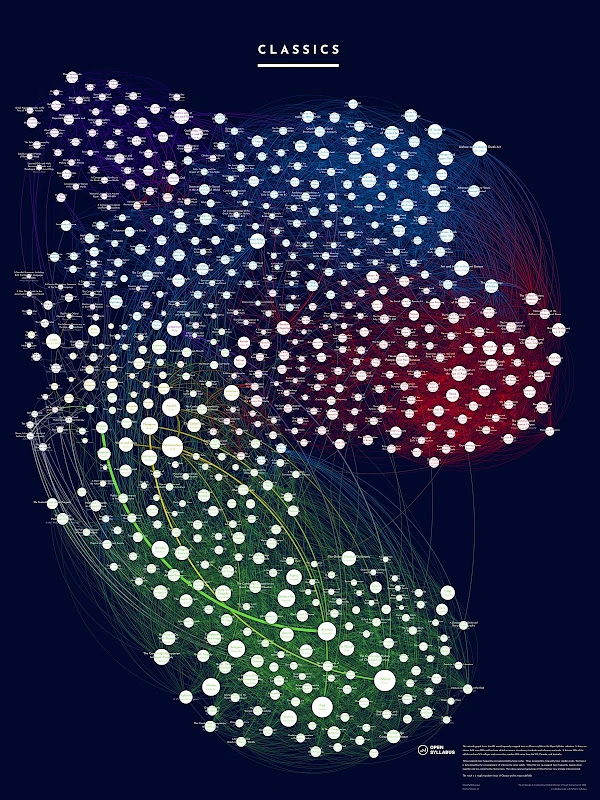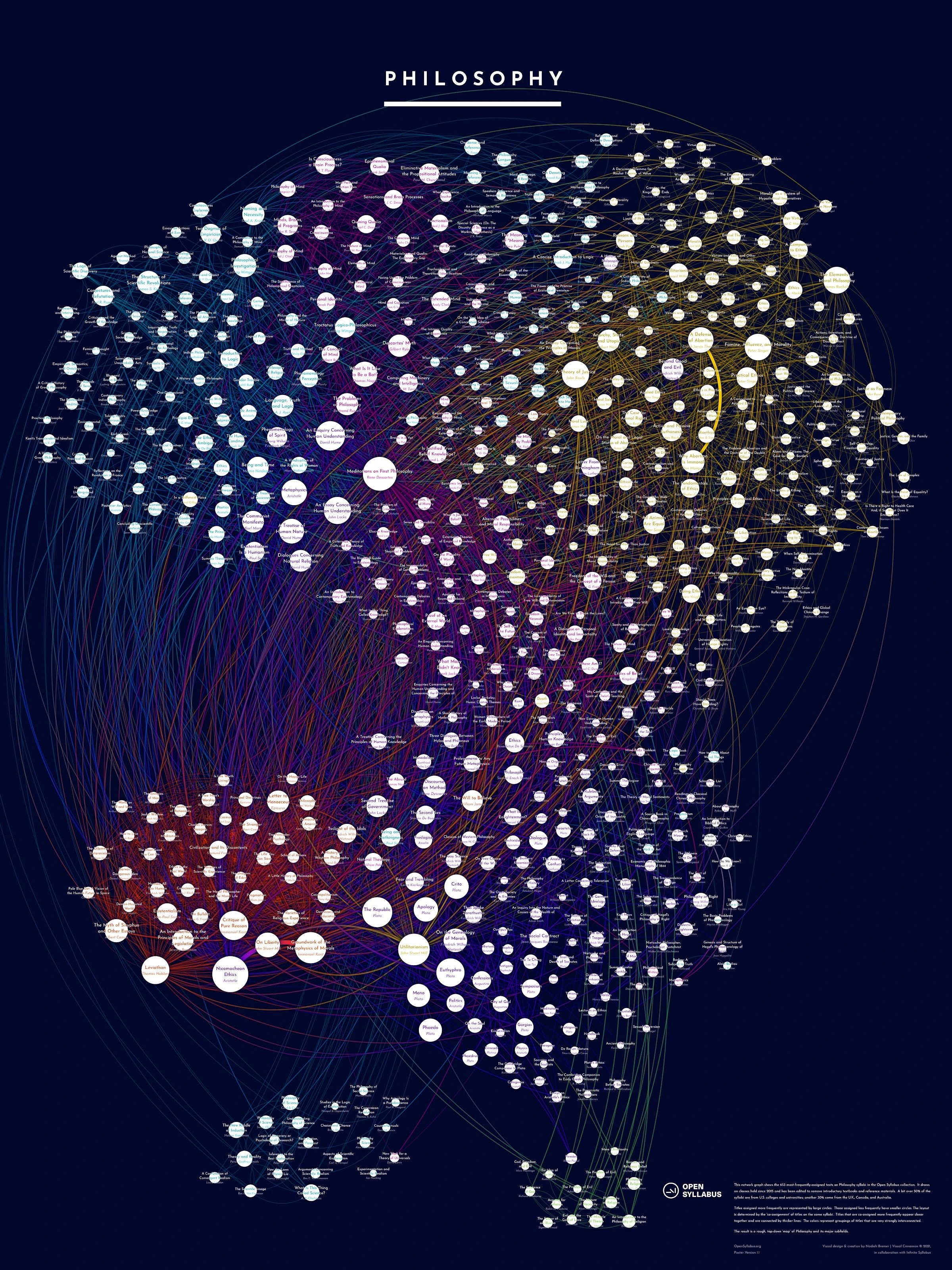Today we’re releasing a big update to Open Syllabus data and websites. Here’s a rundown:
The Co-Assignment Galaxy
The Galaxy has received a massive upgrade in scale and functionality. The previous version mapped 164,000 titles and could display 30,000 at a time. The new version maps 1.1 million titles and can display 500,000 at a time. The resolution of fields and subfields is vastly improved as a result.
The Galaxy also implements a much-requested ‘search by topic’ function, which searches against the full text of syllabi rather than titles and authors–though you can still do that too. Results are now heat mapped to help users zoom in on areas of interest. David McClure has written up a detailed technical post on the new Galaxy for those who want a look under the hood.
OER Metrics
OER Metrics is a new subsite for investigating trends and adoption patterns for openly-licensed books and textbooks (i.e., Open Educational Resources). It provides the first tools for mapping the demand side of the OER ecosystem and–we hope–can help inform adoption decisions by instructors and programs and investment decisions by authors, publishers, and funders.
Link Lab
Link Lab is an exploration of ‘non-traditional’ teaching materials in the collection identified by URLs in the syllabi. These links are then walked back to their source to collect titles, authors, and other metadata. Link Lab picks up newspaper and magazine stories, videos and documentaries, blog posts, and other materials that are frequently taught but rarely recognized or curated as teaching materials. We are working on integrating URL identification into the main dataset. In the meantime, the preliminary data is presented here as a Lab.
The 2.5 Dataset
The Syllabus Explorer, Galaxy, and other services are now using version 2.5 of the OS dataset, which represents a big improvement over the previous 2.0 version. Among the highlights:
It adds 2018 data, bringing the total to 7.2 million syllabi.
This number reflects significant overall growth due to better collecting techniques and also better deduplication techniques. Because the latter outweighed the former, we saw a net gain of 500K syllabi through 2017 (the period of the 2.0 collection).
The 2.5 collection has a much larger reference catalog that enables the identification of many more titles: 4.6 million compared to 1.7 million in 2.0.
And it does a better job of identifying dates and fields.
The result is a richer and more accurate portrait of the curriculum of higher education. Is it perfect? No. Spend some time browsing the data and you will find errors. But it is bigger and better–and we hope more useful and interesting to faculty, students, lifelong learners, and bibliophiles of all kinds.


